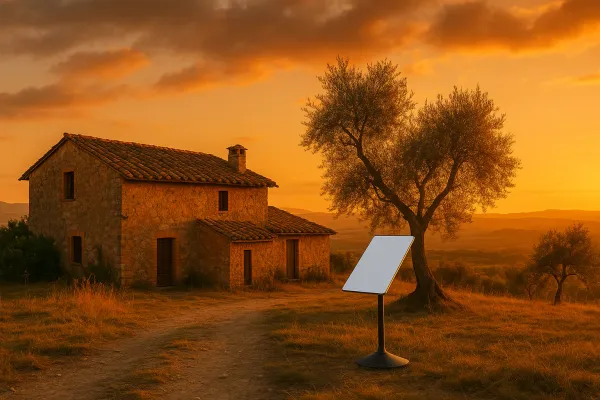Rustic Retreat
Hot Projects
Live broadcasts and documentation from a remote tech outpost in rustic Portugal. Sharing off-grid life, the necessary research & development and the pursuit of life, without centralized infrastructure.
 Subscribe to our new main project Rustic Retreat on the projects own website.
Subscribe to our new main project Rustic Retreat on the projects own website.
This Episode will focus solely on hacking around in the Riden RD-6018W. Per default, the W version comes with a wireless interface and Ridens android app. Since that is less than useful the idea came up to see if we could flash our own firmware onto it.
Luckily Riden uses a COTS ESP12 module. Unluckily the module isn't simply flashed by plugging it into USB like we are used on the ESP32 nodemcu (and the likes) modules. The next task was to analyze and reverse engineer the module and its PCB implementation and hack a little USB-Serial adapter and breadboard magic, to flash a specific esphome firmware that talks modbus to the RD-6018 and exposes the control interfaces and log data to home-assistant.
After that was successfully done, control is now available in Home-Assistant and long term log-data is stored in Prometheus and available in Grafana.
Last but not least USB connection and working with the open-source toolkit RidenGUI also turned out to be no problem at all. All in all, this was a very successful session to get the most out of the Riden RD-6018 and the same should apply to the RD-6006 and RD-6012 models.
In todays Episode we are going to print and assemble a couple of custom designed 3D parts to finally mount the microscope camera focus unit to a cheap vesa monitor arm in order to have a movable and smoothly focussable microscope camera for the workbench.
After that we are going to update the firmware of the iCharger X6 and start playing around with the Riden RD-6018W, update the firmware with unisoft's version and try to get remote control/logging working.
If you want to see more, please join Odysee and follow our channel there.
In todays Episode we are going to print a couple of custom designed 3D parts to be able to mount a microscope camera focus unit to a cheap vesa monitor arm in order to have a nice movable and smoothly focussable microscope camera for the workbench.
After waiting for more parts to arrive and everything being stuck in the supply chain no project could be pushed further, so we have a chill hangout and work on labstuff and see what we can do, like getting the microscope cam going for instance.
If you want to see more, please join Odysee and follow our channel there.
In a time, where the lockdowns have ripped our supply chains apart and the energy crisis has become way worse due to insane political/ideological movements, the future indeed does not look bright. The VORON build is on halt now, since, due to aforementioned supply chain issues, we will have to wait 4 more weeks for parts.
So, let's adapt and try to build things without sourcing new material and components. The challenge is to build something new, but only using parts from trash or what is already available, just like in the worst foreseeable future that is to come.
If you want to see more, please join Odysee and follow our channel there.
In Episode 7 we encountered a couple of issues with the native CAN interface of the Odroid M1 which would hinder our native communication for Klipper and the EBB. Let's dive deeper into the issue, test, debug and find a fix for it.
Today we will unbox and dive into the:
A very big thank you goes out to Linux Automation GmbH for sponsoring the candlelight for our experiments with CAN bus and 3D printers among other things! The candlelight has been extremely helpful to get a reliable quick start with CAN in order to be able to debug and fix the hardkernel issues of their M1 kernel.
If you want to see more, please join Odysee and follow our channel there.
In Episode 7 we encountered a couple of issues with the native CAN interface of the Odroid M1 which would hinder our native communication for Klipper and the EBB. Let's dive deeper into the issue, test, debug and find a fix for it.
Today we will unbox and dive into the:
A very big thank you goes out to Linux Automation GmbH for sponsoring the candlelight for our experiments with CAN bus and 3D printers among other things! The candlelight has been extremely helpful to get a reliable quick start with CAN in order to be able to debug and fix the hardkernel issues of their M1 kernel.
If you want to see more, please join Odysee and follow our channel there.
Today we will:
If you want to see more, please join Odysee and follow our channel there.